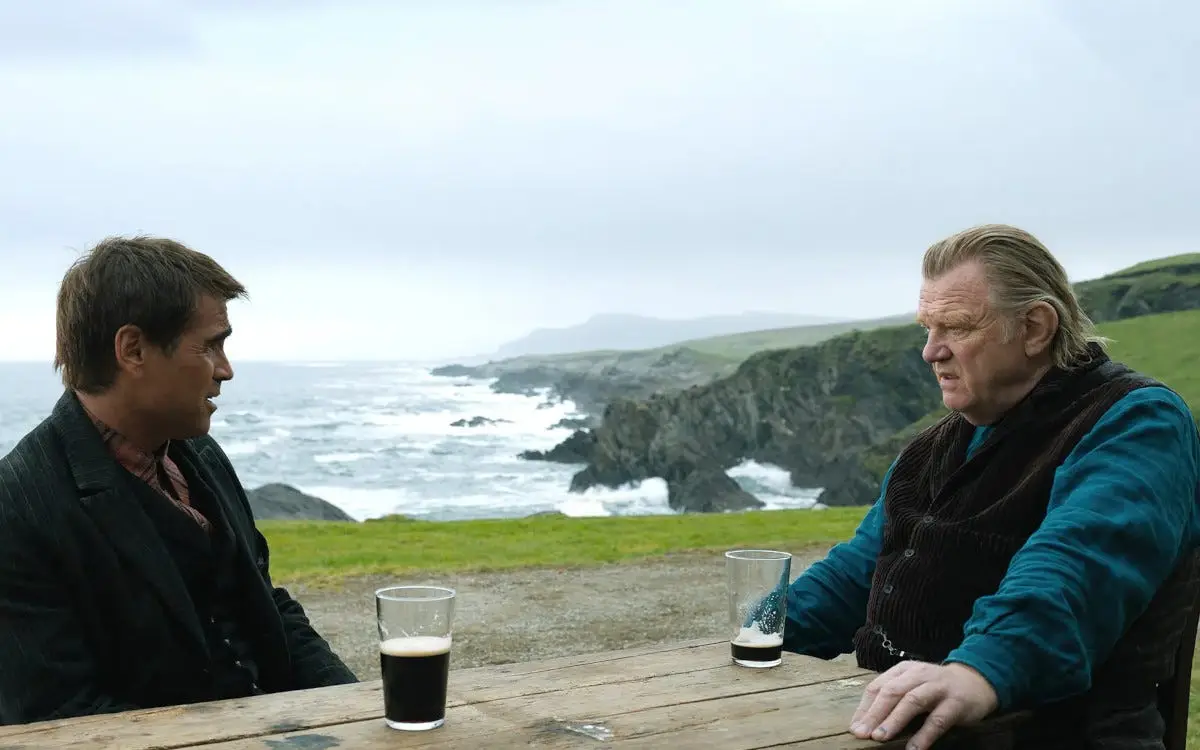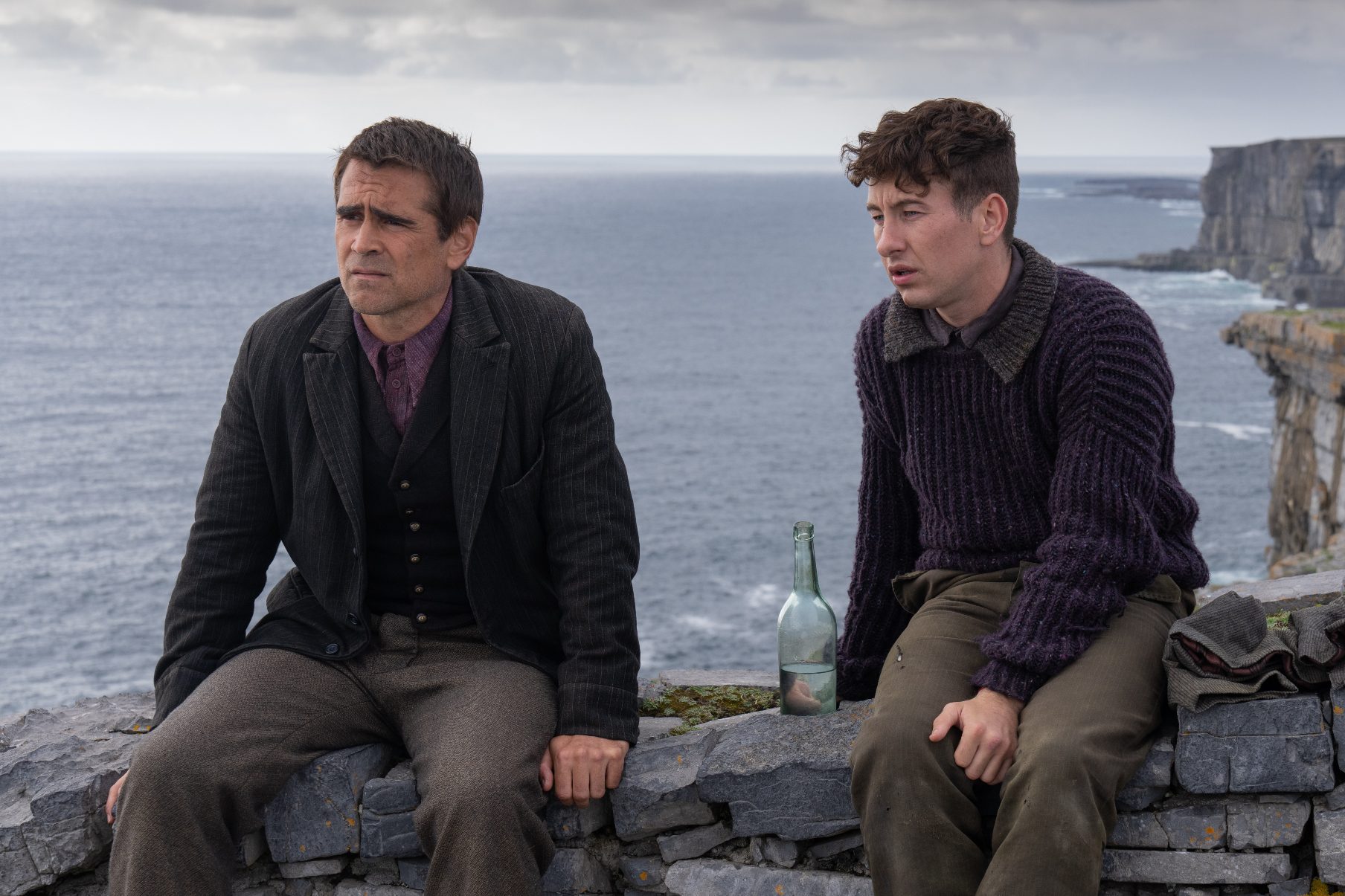Every filmmaker strives to leave a lasting impact on audiences, and “The Banshees of Inisherin” is no exception. This dark comedy-drama, set in Ireland in the 1920s, explores the consequences of legacy and the dangers of personal feuds spiraling out of control. Despite being nominated for eight Oscars without a single win, the film has cemented its place as a deeply resonant and historically significant piece of cinema. Beneath its seemingly straightforward premise lies a complex narrative that leads to a hauntingly ambiguous ending.
The film revolves around two lifelong friends, Pádraic and Colm, living in the fictional island village of Inisherin. When Colm abruptly decides to end their friendship, Pádraic is left bewildered and desperate for an explanation. Colm, a fiddler, warns that he will cut off a finger each time Pádraic tries to engage with him. This shocking ultimatum escalates tensions, involving Pádraic’s sister Siobhán and a troubled local boy named Dominic, both of whom are drawn into the growing conflict.
The feud takes a darker turn when Colm follows through on his threat, severing his fingers as a sign of his determination. As the tension rises, Mrs. McCormick, an elderly woman, ominously predicts that death will soon come to the island. Dominic, who seeks peace between the two men, is heartbroken by Pádraic’s increasingly cruel behavior. His rejection by Siobhán adds to his misery, foreshadowing the film’s tragic developments.
Unfinished Battles and Uncertain Futures in The Banshees of Inisherin
While Colm instigates the conflict, it is Pádraic who worsens it. His deception and drunken boasts push Colm to the brink, leading the fiddler to cut off all the fingers on his playing hand. The tragedy deepens when Pádraic’s beloved donkey, Jenny, accidentally chokes on one of Colm’s severed fingers. Overwhelmed by loss, Pádraic reaches his breaking point as Siobhán also decides to leave the island.
Following the death of his donkey and the departure of his sister, Pádraic takes drastic action, warning Colm that he will burn down his house. Colm refuses to leave, choosing instead to sit inside while the fire engulfs his home. At the last moment, Pádraic rescues Colm, indicating that their battle has not yet reached its final conclusion. Meanwhile, the body of Dominic is found in a nearby lake, leaving unanswered questions about his tragic fate.

Despite the destruction, Colm believes their feud is over. However, Pádraic disagrees, asserting that true closure would have only come if Colm had perished in the fire. Their unresolved conflict mirrors the larger Irish Civil War, which serves as a symbolic backdrop for their personal battle. The film’s final scene, in which the two men silently watch the sea under Mrs. McCormick’s watchful gaze, leaves their future uncertain.
Echoes of War and Legacy in The Banshees of Inisherin
“The Banshees of Inisherin” subtly parallels the Irish Civil War, a brutal conflict that divided the nation over the Anglo-Irish Treaty. Though the war was brief, its repercussions were long-lasting, fracturing Irish society for generations. Similarly, the rift between Pádraic and Colm serves as an allegory for how personal and national conflicts can spiral beyond control, causing unintended harm to innocent bystanders.
The film’s open-ended conclusion allows for multiple interpretations. While some view it as a tragic, inescapable cycle of revenge, others see potential for reconciliation. Even Brendan Gleeson and Colin Farrell, the actors portraying Colm and Pádraic, debated the ending’s meaning. Farrell pointed out that the mere fact that Pádraic saved Colm and returned his dog might indicate a path toward healing.
Ironically, Colm initially sought to leave a musical legacy, but his self-mutilation prevents him from achieving this goal. Instead, his and Pádraic’s actions ensure they will be remembered for their bizarre and destructive feud. As Farrell remarked, their legacy is complete—but not in the way they intended.
The film ultimately challenges viewers to consider the cost of personal and political conflicts. Whether its ending signifies doom or a chance for redemption remains open to interpretation. What is clear, however, is that “The Banshees of Inisherin” leaves a lasting impression, securing its place as a thought-provoking meditation on human relationships, legacy, and the power of grudges.



